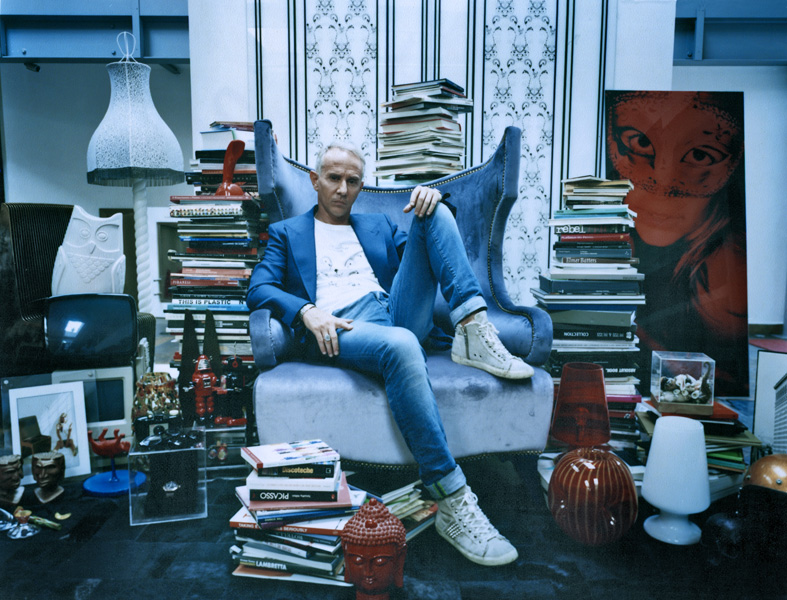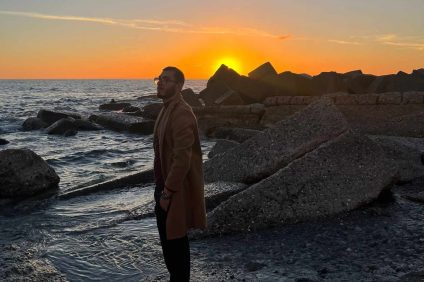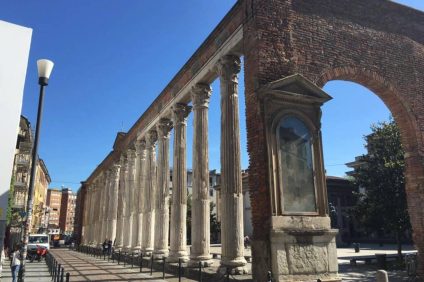The 57-year-old architect and design Fabio Rotella was born in Catanzaro but lives and works in Milano since many years. He inherited the passion for art and creativity from his family, where inspiration has never been lacking. His uncle, Mimmo Rotella (Catanzaro 1908 - Milan 2006), was one of the protagonists of the art scene of the second half of the twentieth century (he joined the Nouveau Réalisme and approached British and American Pop Art). This environment, so rich in stimuli, has contributed significantly to its cultural and artistic formation.
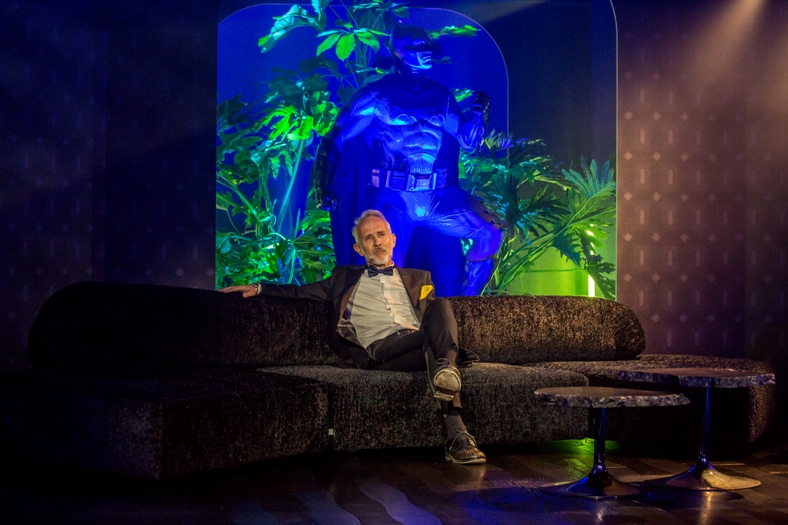
Fabio Rotella, appreciated in Italy and abroad
Eclectic architect and refined design, Fabio Rotella realizes architectural and conceptual projects in Italy and abroad (redevelopment of urban areas and industrial reconversions, design of hotels, restaurants and private villas), designs collections of furniture, accessories and lighting systems, collaborates with numerous important Italian and foreign companies. Through his art he brings the world creativity made in Italy, receiving great acclaim and appreciation everywhere.

Training and collaborations
After graduating in architecture in Rome, Fabio Rotella obtained, in 1989, a master in Industrial and Management Design at the Domus Academy in Milan. From 1990 to 1995 he collaborated with theMendini Atelier, where he is responsible for coordinating architectural, design and event projects. Today he is the art director of several companies: he takes care of their image, designs products, creates and coordinates artistic-cultural events, participates in national and international exhibitions. It also collaborates with famous brands such as Heineken, Mc Donald's, Swatch, Bisazza, Coca Cola, Breil.
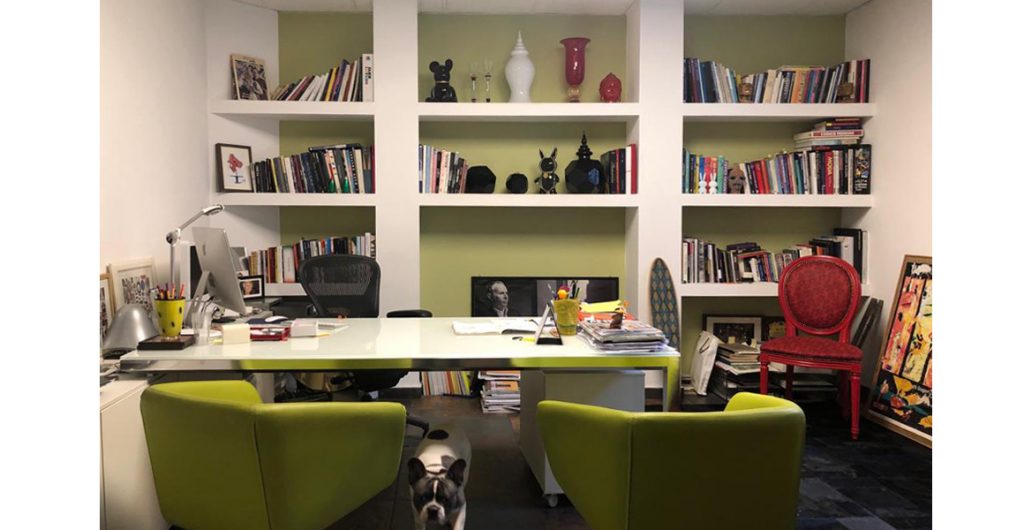
The Rotella Studio
In 1996, Fabio Rotella founded an important studio, a creative factory that deals with architecture, interior design and image consultancy for companies. The “Studio Rotella” is an international design studio, with offices in Milano e Beijing (China). It makes use of the collaboration of professionals from all over the world, who boast numerous professional and educational experiences.
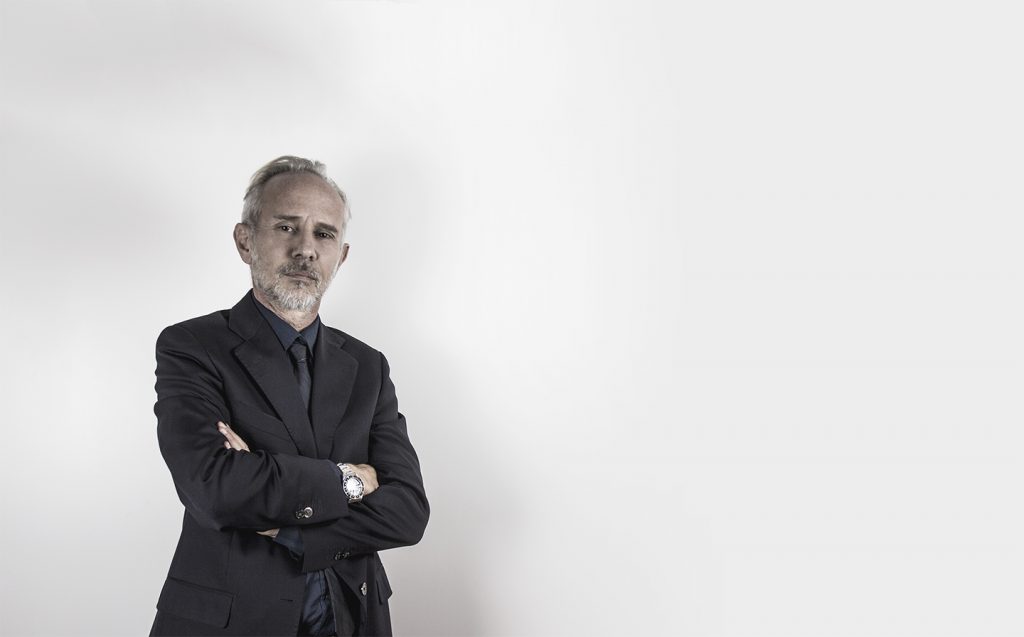
In this interview, Rotella talks to us about his projects, in which art and poetry merge, all conceived and studied with respect for man and the planet. Because - he explains - like all creatives, he has a “responsibility for future generations”, which leads him to base his work on research.

Architect, Studio Rotella's projects bring Italian art and culture to the world. In which country are they most appreciated?
“Over the years we have worked in Europe, in the USA, in Arab countries and, since 2013, we have an office in Beijing, China. It is in this country that we have carried out important projects. Here I started working from 2012 to create the first one Permanent Italian Museum, a project wanted by the Chinese and Italian governments. Since that time there has been a Studio Rotella Cina, in Beijing, which deals with master plain, architecture and interior design. Rotella is master of several associations of architects, is culture ambassador of the 751st district in Beijing, participates as visiting professor in several Chinese universities. Studio Rotella also deals with retail projects, shops, show rooms, hotels, luxury villas ».
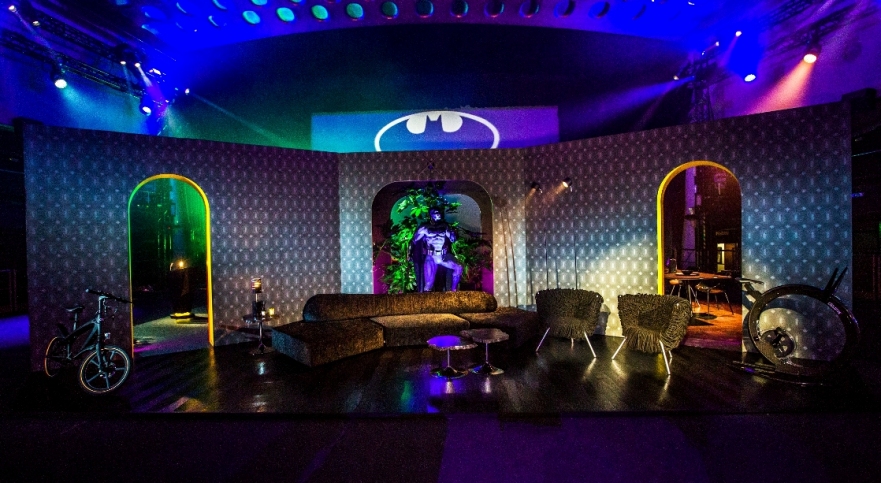
About her they wrote: “He elaborates his projects while maintaining an ethical, artistic and deeply poetic approach”. How do ethics, art and poetry come together in your works?
«Our projects are always approached with a poetic and ethical approach, trying to express creativity while respecting man and safeguarding our planet. We always start with research that explores the different arts. Creating a cultural basis for the project is very important, then we move on to the application of aesthetics, design, materials and technologies applied to an eco-thought. I consider myself a sort of Siddhartha, a traveler in the world of creative experiences where different forms of art are applied».
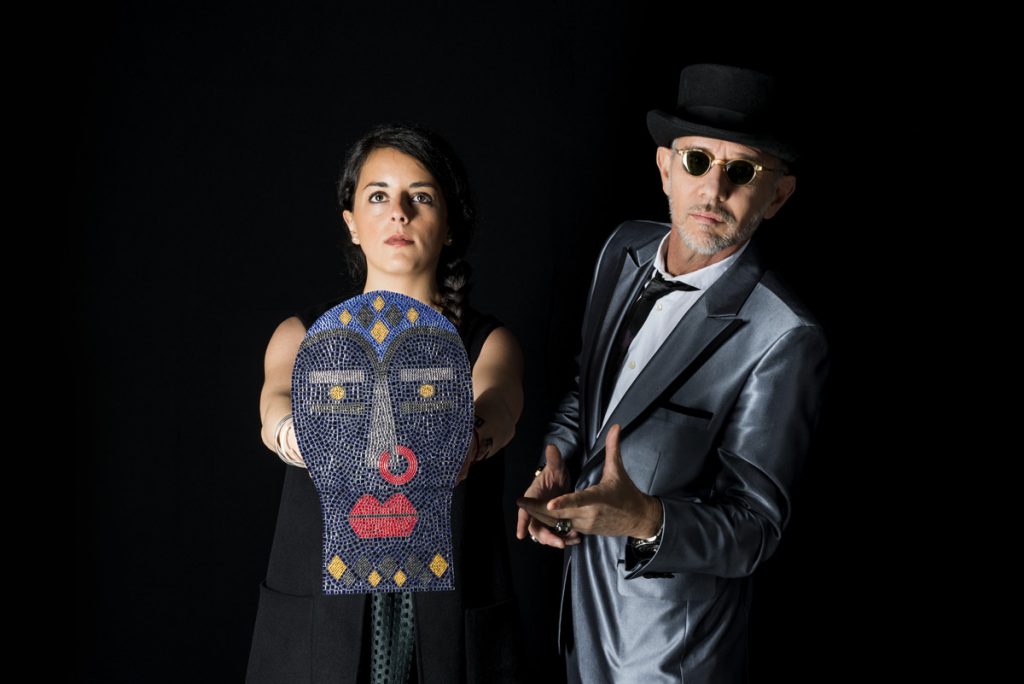
He comes from a creative family. How much did your origins influence your training?
«My cultural background starts from my roots: my family, made up of creatives active in the field of fashion, art and architecture. My grandmother already owned an atelier in the 20s; my uncle Mimmo was one of the most important Pop Art interpreters in the world; my dad was a good architect. Then the collaboration with Alessandro Mendini, in the early 90s, further formed me, both humanly and professionally. It was a profound experience with a brilliant teacher».

You define your studio as a factory, why?
«Studio Rotella is a factory because it brings together many creatives, professionals from different countries: architects, interior designers, industrial designers and graphic designers. The projects are tackled by creating specific teams that develop from the concept to the executive phases. I am very open and curious, which is why the studio is always frequented by experimenters, artists, communicators, filmmakers. Research and the intersections between different arts and cultures is essential in order to always be at the forefront and competitive in a world that is constantly evolving».
What did your uncle, the artist Mimmo Rotella, pass on to you?
"Definitely the love for art, the curiosity towards all creative expressions, but above all the desire to always seek a transversal point of view, to look at things with a broad perspective, to find one's own creative identity without forcing" .
You have always been attentive to the environment. Can you explain how Studio Rotella's projects are eco-compatible?
«Our goal, when we think about a project, is to create something that improves the life of those who will use our product, be it an architecture or an object. We creatives have a responsibility for future generations. What we create is the world of tomorrow. Respecting man and our planet is part of our mission».
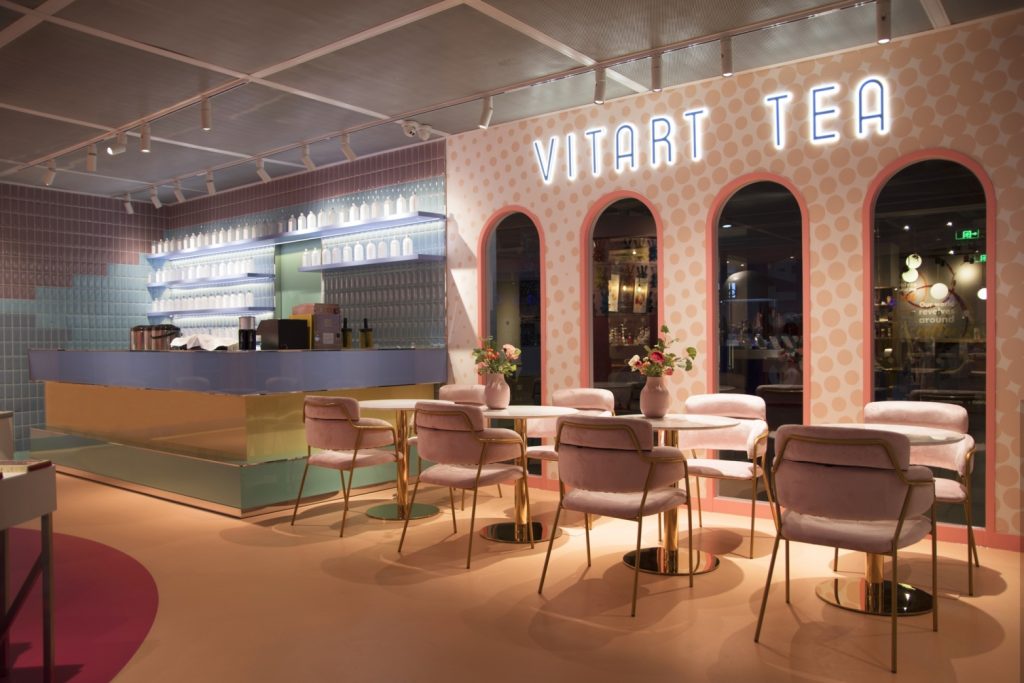
In Italy there are numerous villages that are in danger of disappearing due to progressive depopulation. In your opinion, what should be done to reverse this trend and restore vitality to these small towns, rich in history and culture?
“This sudden change leads to fundamental considerations about living, where and how. In recent decades there has been a tendency to abandon small towns to focus on urban areas, to merge cities for the creation of metropolitan areas. In doing so there has been an emptying of entire territories, which have lost population by decreasing the local economy, with a consequent loss of cultural identity. It is precisely from the villages that Italy should start again, give a strong signal of a strategy to relaunch historical places full of a strong cultural identity, equip them with new communication technologies such as fiber, improve connections, services. Of course it is taken for granted that, never as at this moment, Italy can and must respond to the world with new tourist proposals. Across its villages it is a large widespread hotel ».
Can you tell us about the “Piano del Colore” of Catanzaro?
«Il Piano del Colore is a project aimed at redeveloping the image of the city that regulates the correct carrying out of the operations of coloring, cleaning and restoring the facades or parts of them, such as fixtures, balustrades, decorations in the municipal area. The coloring building interventions contribute substantially to the definition of the urban image: they are not just a stylistic quirk, based on the choice of a range of colors, but recovery and restoration of the facades that require interventions on plaster, decorative and structural elements. On the basis of this objective, the Color Plan of the Catanzaro Lido district area defines a chromatic range that recovers the different shades of the sea, from white to marine green, to blue, bringing a reinterpretation to the color tradition of Mediterranean cities ".
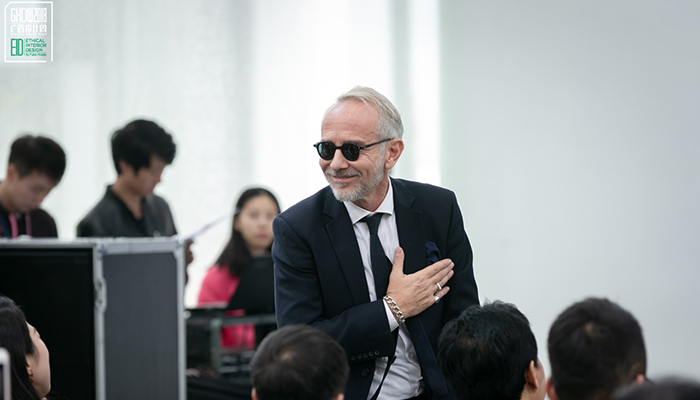
Which creation has given you the greatest satisfaction so far?
"What will come".
What was the most eccentric one?
"We customized a Ferrari for an Indian client."
And the most bizarre one?
«Designing the signature of one of our Russian clients».
(Photo Studio Rotella)

